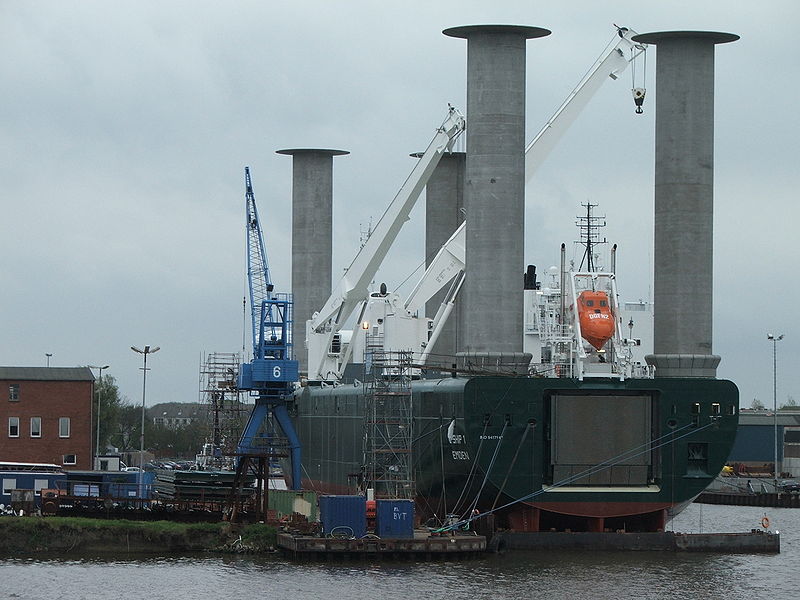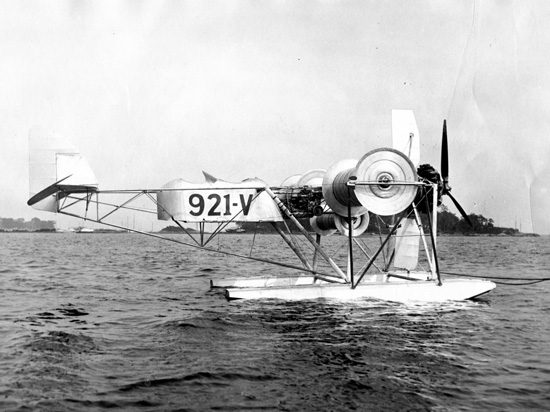Going to nerd about something that we were reminded of today: magnus effect aircraft.
The magnus effect is a somewhat unintuitive bit of physics that makes a spinning object moving through the air generate lift.
The magnus effect is a somewhat unintuitive bit of physics that makes a spinning object moving through the air generate lift.
People may be familiar with the magnus effect in the context of sports. It's why a spinning ball can curve through the air. It also matters for ballistics in a crosswind, and it can be used to power ships as a fancy equivalent of a sail.
You might have also seen videos of people putting backspin on a ball and dropping it off of something tall, only for it to glide away. That's the magnus effect in action.
So then the thought becomes, if you can make things glide with it, what about powered flight?
So then the thought becomes, if you can make things glide with it, what about powered flight?
Well, someone tried in 1930. Allegedly it made a few flights, but there's very little about this thing online and nothing we can find backing up the inventor's claims about it. Some elements of the design, like the forward vertical stabilizers, look pretty questionable.
More recently, hobbyists have been building RC planes on the principle. They often use rotors made of sets of flat panels designed to autorotate, though some use motorized cylinders.
Some have really weird layouts with all the weight hung under the rotors. They look a bit like a flying push lawnmower.
Here's another with a weird biplane style layout for some reason.
Notably, there's also been a modern manned attempt. This Russian towed glider seems to e off to a good start, but the rotors end up spinning at different speeds, producing different amounts of lift so it rolls into the ground on takeoff.
It would be a fairly easy problem to fix, we would think. Either have the rotors sinning fixed together, or provide a way to control their relative speed. Unfortunately, we haven't been able to find anything more about that thing or any additional attempts.
So, why care about these? Why would someone build a plane like that?
Well, they are kind of nifty. But beyond that, it's not entirely clear. Though the underlying physics are fairly well understood, the practical engineering implications are not.
Well, they are kind of nifty. But beyond that, it's not entirely clear. Though the underlying physics are fairly well understood, the practical engineering implications are not.
No one really knows best practices for building a plane this way, or what it would end up being good at to make it worthwhile. Not enough work has been done on them for that. We do know that they are stall resistant, produce more lift than a wing a low speeds, and gust resistant.
On the other hand, the are complex, heavy, high drag, usually require power to operate, and lower efficiency at high speed. They may have applications in small UAVs, and this technology could be useful for high lift devices or boundary layer control, but we wouldn't bet on it.
For a more in depth discussion of them, we recommend "A review of the Magnus effect in aeronautics" by Jost Seifert, which is conveniently available in PDF form. -Claire
https://forum.awesystems.info/uploads/short-url/7g7IKerY1PHpwGj36Tlv9uJMvds.pdf
https://forum.awesystems.info/uploads/short-url/7g7IKerY1PHpwGj36Tlv9uJMvds.pdf

 Read on Twitter
Read on Twitter



